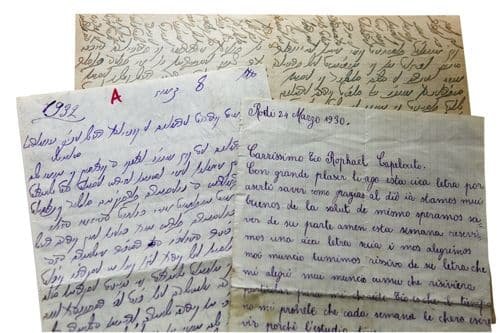Fast becoming a Sephardic guru, a University of Washington professor is building the world’s first digital library of books, letters and other materials in the centuries-old language of Ladino, with materials donated from Seattle’s large Sephardic Jewish community.
By Nina Shapiro
Seattle Times staff reporter
Devin Naar wasn’t hired at the University of Washington to teach Sephardic studies. The young scholar, only in his late 20s at the time, actually came to the university in 2011 to teach modern Jewish history.
Then the local Sephardic community found out that Naar could speak and read Ladino — the language of the diaspora resulting from Spain’s expulsion of the Jews in 1492, a mixture of Spanish, Arabic, Turkish, Greek and other languages picked up in the lands where they settled.

This is an unusual skill. Naar says he doesn’t know of any U.S. universities that teach students how to read Ladino in Hebrew script, as it was written until the mid-1900s. This is particularly difficult when it comes to handwritten Ladino because, Naar says, “the way Sephardic Jews write Hebrew looks almost nothing like the way other Jews write Hebrew.” Cursive Ladino, in fact, is reminiscent of Arabic.
Naar, trying to decipher letters left behind by a Sephardic great-uncle, taught himself to decode the script using library books.
Once local Sephardic Jews discovered that, they started bringing him Ladino items they had squirreled away: a grandfather’s will, letters, newspapers, wedding contracts, songbooks, photos with inscriptions. And books. Lots of books.
In all — including the voluminous materials Naar found in a cache of Safeway bags buried in the basement of Seward Park’s Sephardic Bikur Holim Congregation, dubbed the “Safeway Archives”— Naar has collected more than 700 Ladino books and at least as many items of other types.
The Ladino collection is among the nation’s largest, second to the one housed at Yeshiva University in New York. Among the finds is a rare book of ethics published in Istanbul in the 1740s and a 1916 book of advice to immigrants to the U.S., which among weightier matters carries a useful explanation of how to eat ice-cream cones. (Ice cream, Sephardic Jews had seen before. Ice cream cones, not so much.)

As excitement built among Seattle’s Sephardim, who still use some Ladino words in prayers and everyday speech, several families and a foundation donated money to get a new Sephardic studies program off the ground. It started three years ago, with Naar as its chairman, as part of UW’s Stroum Center for Jewish Studies.
Naar and his small team are digitally scanning their Ladino materials to create what they believe will be the world’s first interactive, online Ladino library and museum. They have started to upload materials, along with English translations of key passages and historical context.
And Naar, now 32, with youthful ringlets that belie a mature, scholarly manner, is fast becoming a Sephardic guru. He recently returned from a conference in France, where he delivered a lecture about Seattle’s Sephardic Jews — in Ladino, joining a small group of people from around the world who understand the centuries-old language.
Fuente: seattletimes.com
 eSefarad Noticias del Mundo Sefaradi
eSefarad Noticias del Mundo Sefaradi

